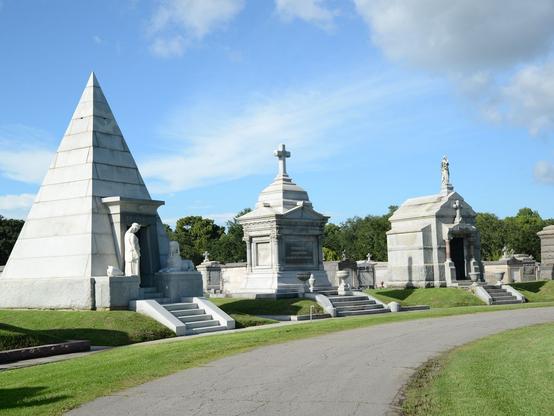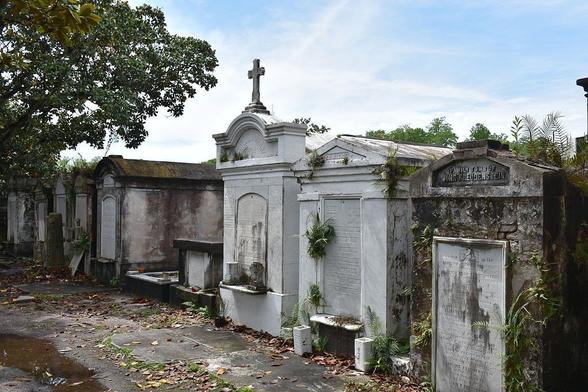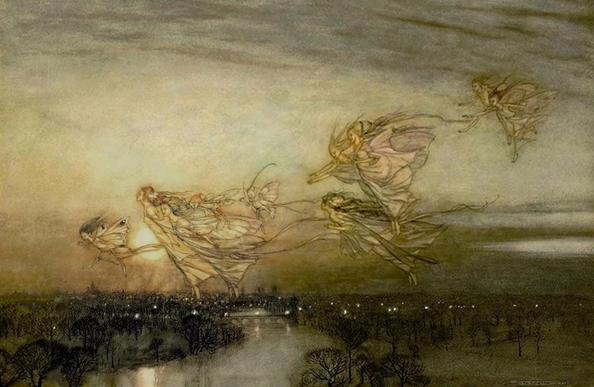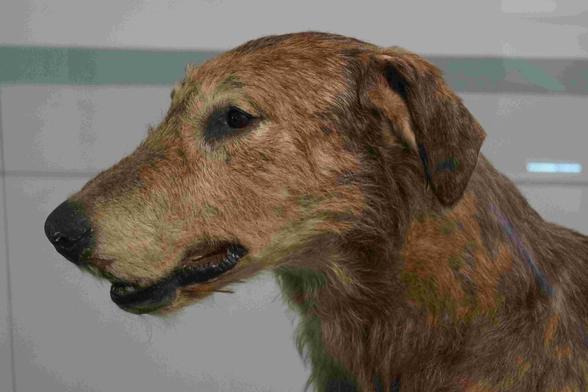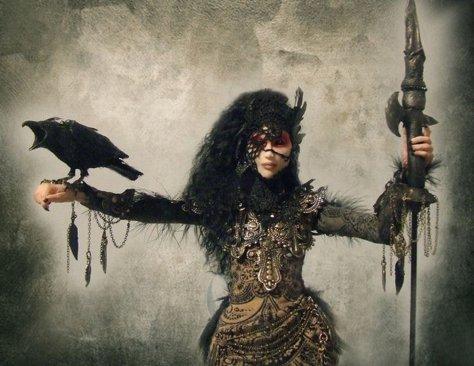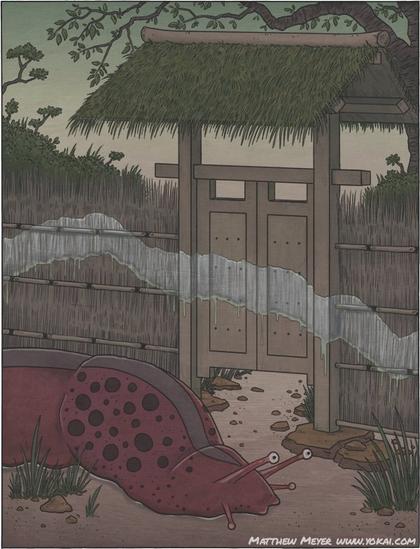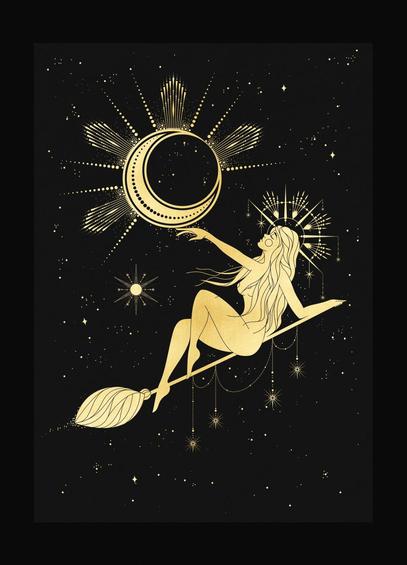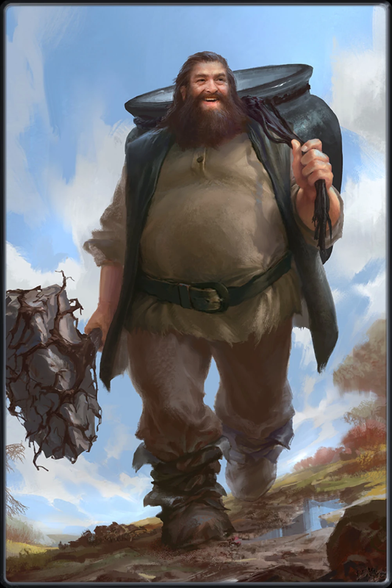Few American cemeteries can claim the gothic scenery and majesty of New Orleans' plethora of above ground mausoleums and family crypts. Dating back to before it was American, these are popular tourist attractions and old greats like Marie Laveau. #FolkloreSunday
Recent searches
Search options
#FolkloreSunday
'Twilight Dreams' - by Arthur Rackham - illustration for Peter Pan in Kensington Gardens.
#FairyTaleTuesday #WyrdWednesday #LegendaryWednesday #FolkloreThursday #FolkyFriday #FolkloreSunday
#FolkloreSunday: The hound Ailbe, "whose pleasure was in combat," was bred by Lena and the pet of Lugh’s daughter Aillend, until she died of shame after being abducted by Crem Marda.
Source: Ronald Hicks & Laura Ward Elder „Festivals, Deaths, and the Sacred Landscape of Ancient Ireland“ #Celtic
#FolkloreSunday: The Blackthorn tree is especially sacred to the Irish goddess the Morrígan ‘the Great Queen’ who oversees matters of war, death, and sexuality.” #Celtic
Source: https://blackthornandstone.com/2020/08/06/blackthorn-dark-mother-of-the-woods-crone-of-the-triple-goddess-witch-wood/
If you are in a Japanese garden, you may want to keep an eye out for a #yokai known as namekujira, which translates as slug-whale. These giant slugs can be as big as humans, if not bigger. They crawl around gardens leaving extensive trails of thick, silvery slime. #FolkloreSunday #SwampSunday 1/2
Why does the moon hold such powerful sway over our perception of modern witchcraft? Many goddesses of magic, such as Hekate, Selene, Isis, and Diana, as well as gods like Sin and Saggar, utilize both magic and moonlight in preserved rituals. #FolkloreSunday
: Cocorrina
I published a new article today about Nezu Jinja in Tokyo, one of my favourite Shinto shrines. I've included a brief history, some information about the deities enshrined, lots of photos, and even some woodblock prints. I hope you enjoy it!
open.substack.com/pub/curiouso...
#FolkloreSunday #Shinto
Nezu Jinja in Tokyo
#FolkloreSunday: „The practice of bedecking a May Bush with flowers, ribbons, garlands and bright shells is found among the Gaelic diaspora, most notably in Newfoundland, and in some Easter traditions on the East Coast of the United States.“ #Celtic
Source: Hutton, Ronald. The Stations of the Sun: A History of the Ritual Year in Britain. Oxford University Press, 1996. pp. 218–225
#FolkloreSunday: Choose your wife as you wish your children to be. Take a bird from a clean nest.
Choose the good mother's daughter, were the Devil her father.
If you take a wife from Hell, she'll bring you home there.
When you see a well-bred woman, catch her, catch her; if you don't do it, another will match her.“ #Celtic
Source: A Collection of Gaelic proverbs and familiar phrases, based on Macintosh’s Collection edited by Alexander Nicolson
She was the greatest teacher of arms of her age: all the warriors of Alba and Eire sent their sons and daughters to learn to fight under Scáthach the Shadow. She taught CuChulainn and Ferdiad how to fight, and only her sister Aífe was her equal. #FolkloreSunday
: T. Wincinas
In #JapaneseFolklore, many rivers and ponds are believed to be inhabited by nushi, which are guardian spirits. They can be both benevolent and dangerous. There was one pond near the Asuwa River that was said to be home to a terrifying catfish nushi. Because of... #SwampSunday #FolkloreSunday 1/6
Magisch: Johanna Warren im Kontakt mit ihrem dreijährigem Selbst: #JohannaWarren #indie #acoustic #childhood #folk #FolkloreSunday #Folklore #Neofolk: http://www.popmonitor.de/johanna-warren-the-night-of-the-wind/
In European folklore, witches and warlocks liked to transform into rabbits and hares in order to sneak onto a farm to cause trouble. If the crops died or the animals got sick, the farmers would often blame any rabbit or hare they recently saw on their property.
Welsh folklore tells us that Palm Sunday is a time to remember the dead:
"In some parts of Wales Palm Sunday, called in Welsh Sul-y-Blodau (Flowering Sunday), all the graves in churchyards, cemeteries, and burial-places are decorated with flowers."
#PalmSunday #FolkloreSunday
"The elemental loses its shape. Fur, skin, flesh and bone subside, crumbling into scree. Its eyes darken and it withdraws to the remembrance of a trackway lying beneath a pelt of leaves, sewn with the stitches of fallen branches."
#BlackDog #Shuck #FolkloreThursday #FolkyFriday #FolkloreSunday
The moon is full of rabbits and food: in East Asia, Chang'e's companion the Jade Rabbit makes sweets, such as mochi in Japan; in Mesoamerica, the rabbit was placed in the moon by a thankful Quetzacoatl who drank from the willing rabbit when dying of thirst. #FolkloreSunday
Mead was born of the blood of Kvasir, and it makes all a poet. The Mead of Poetry was stolen from the giants by the god but spilled out into the world: so when you find inspiration, know it comes from on high... but so does bad poetry. #FolkloreSunday
: F. Stassen
Inari is the kami of productivity and fertility in Japan, in most ancient and most modern sense. They are a kami of extremes brought into one, representing male and female at once, agriculture and industry, all dependent on context. #FolkloreSunday
The Feathered Serpent of Mesoamerica is often quite woolly with plumage, calling to mind images of feathered dinosaurs. Such beings, like Quetzecoatl, are often associated with fertility and rain, and represents a dual nature, slithering in air and ground. #FolkloreSunday
The Dagda is the Good God, the god of plenty and of fertile earth. As large as his blessings, and in every sense, his Cauldron of Plenty is known for being endless, making him the best of hosts and the most jovial, too. #FolkloreSunday


